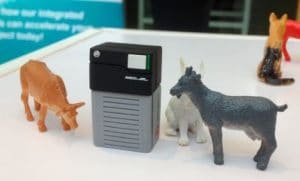 If you weren’t at the 36th International Society for Animal Genetics Conference in Dublin, you missed more than a chance to drink Guinness and practice an Irish brogue. The PacBio team had a great time at ISAG, learning about the latest in animal science and updating attendees on the advantages of SMRT Sequencing for generating high-quality genome assemblies and annotations.
If you weren’t at the 36th International Society for Animal Genetics Conference in Dublin, you missed more than a chance to drink Guinness and practice an Irish brogue. The PacBio team had a great time at ISAG, learning about the latest in animal science and updating attendees on the advantages of SMRT Sequencing for generating high-quality genome assemblies and annotations.
The conference drew more than 750 scientists from around the world, and we were truly impressed by the quality of research they presented in talks and posters. Long-read PacBio sequencing is already making a difference for scientists in this community, many of whom are focused on improved breeding programs. Genome assemblies powered by SMRT Sequencing were presented for many economically important species, including chicken, sheep, goat, pig, cattle, horse, camel, and Atlantic herring. There were also several presentations featuring PacBio long-read sequencing data for immune region haplotypes such as the leukocyte receptor complex and the major histocompatibility complex.
We hosted a morning seminar that demonstrated how SMRT Sequencing provides comprehensive views of animal genomes and transcriptomes. John Williams from the University of Adelaide presented a preliminary assembly of the water buffalo genome generated with Sequel System data. A member of the International Buffalo Genome Consortium, Williams described limitations in contiguity and completion for previous sequencing efforts that used short-read data for this important livestock animal. Seeking a reference-grade assembly, the scientists turned to PacBio long reads, using FALCON-Unzip to phase more than half of the diploid genome. Though the assembly is not yet polished, Williams reported a stellar contig N50 of 18.7 Mb. The other seminar speaker was our own Emily Hatas, who discussed the chicken genome annotation generated by Richard Kuo at the Roslin Institute. In that project, scientists used the Iso-Seq method with SMRT Sequencing to identify 64,000 transcripts, including more than 17,000 long non-coding RNAs that had not been previously annotated.
As sponsors of the event, we also had fun encouraging attendees to snap creative photos with the toy animals we gave away at our booth. Check out the variety of clever snapshots!
August 7, 2017 | General